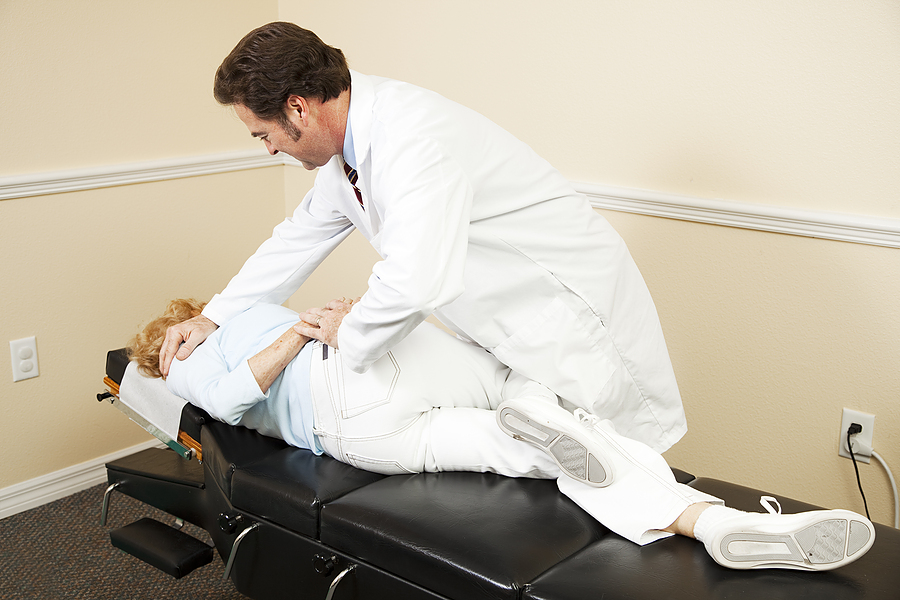Why is Chiropractic Care ImportantWhy getting medical attention right after after a car accident is so important?
Neck Adjustment Video
Neck Adjustment
Raj was the driver of the first car impacted. He presented with terrible whiplash pain. Any movement to his neck was significant. After two adjustments to his neck he was 40% improved. This video shows how fast chiropractic can give a patient relief. He’s definitely not fixed but he sure was happy to feel significant improvement so he could move better and SLEEP.
Upper Cervical Adjustment
For 16 years, Les suffered with lower back pain resulting from a car accident. He tried traditional chiropractic, but was often uncomfortable with the methods used. His life changed when he later heard about upper cervical chiropractic.
Upper Cervical Adjustment Video
Muscle Testing & Applied Kinesiology Video
Muscle Testing & Applied Kinesiology
Dr. Kuykendall about chiropractic and applied kinesiology shows how you can use muscle testing and applied kinesiology techniques to improve the function of a persons body and mind. Dr. Kuykendall practices functional medicine that seeks to locate and address the cause of symptoms to eliminate them so you don’t have to take medications to manage them. Here is an alternative to pharmaceutical interventions and invasive surgery for health and wellness.
The Activator Method
Carol Grant, of the Grant Chiropractic Health Center, demonstrates a gentle chiropractic technique called “The Activator Method”. This method is beneficial for patients in acute pain as well as children and elderly patients.
The Activator Method Video
Graston and Active Release Techniques Video
Graston and Active Release Techniques
Dr. Duke of Duke Chiropractic performing a sample treatment to the hamstring using Graston and Active Release Techniques.
Atlas Orthogonal Instrument
Demonstration of the treatment technology associated with Dr. Donald Liebell — the Atlas Orthogonal Intrument.
Atlas Orthogonal Instrument Video
Diversified Technique Video
Diversified Technique
Diversified technique (DT) is the most commonly used adjustment technique by chiropractors. Diversified is considered the most generic chiropractic manipulative technique and is differentiated from other techniques in that its objective is to restore proper movement and alignment of spine and joint dysfunction
Diversified Technique
During auto accidents, it is not uncommon for a patient to hit the dash or the steering wheel. Often times patients use their hand to brace themselves on impact. The compression that occurs in the hand is transferred up to the shoulder, creating a shoulder injury. That stress can cause micro-tears to the muscles (strains) and ligaments (sprains) of in the supraspinatus and infraspinatus. These tears can vary from complete (Grade III) to less than 25% (Grade I). They can cause swelling, inflammation, and lead to bursitis, pain, and eventually cause neck pain and headaches. Typical treatment for these tears (shoulder Injuries) includes the use of muscle stimulation or ultrasound to decrease the pain and increase the circulation to that area. After that, a form of myofascial release is often used to break up the scar tissue that has formed. Common forms of myofascial release including instrument assisted soft tissue mobilization (IASTM), active release technique (ART), Graston technique, and Functional and Kinetic Treatment with Rehabilitation (FAKTR) technique.
Diversified Technique Video
Joint Manipulation Video
Joint Manipulation
Joint manipulation is a type of passive movement of a skeletal joint. It is usually aimed at one or more ‘target’ synovial joints with the aim of achieving a therapeutic effect.
Motion Palpation & Joint Mobilization
Joint mobilization is a manual therapy intervention, a type of passive movement of a skeletal joint. It is usually aimed at a ‘target’ synovial joint with the aim of achieving a therapeutic effect.
Motion Palpation & Joint Mobilization Video
Manipulation under Anesthesia (MUA) Video
Manipulation under Anesthesia (MUA)
Manipulation Under Anesthesia (MUA) is multidisciplinary manual therapy treatment system which is used to improve articular and soft tissue movement using specifically controlled release, myofascial manipulation, and mobilization techniques while the patient is under moderate to deep IV sedation using monitorized anesthesia care (MAC).
Standard Chiropractic Spinal Adjustment Video
Standard Chiropractic Spinal Adjustment
The International Chiropractor’s Association (ICA) states that the “chiropractic spinal adjustment is unique and singular to the chiropractic profession”, and that it “is characterized by a specific thrust applied to the vertebra utilizing parts of the vertebra and contiguous structures as levers to directionally correct articular malposition.
The NUCCA Protocol
The NUCCA protocol consists of several steps: determining whether or not atlas subluxation complex (ASC) is present, taking precise x‑ray films of the upper cervical spine in 3‑D, x‑rays analysis, the adjustment and post-x-rays.
NUCCA Chiropractic Video
Mobilization of Lower and Upper Thoracic Spine Video
Spinal mobilization is a type of passive movement of a spinal segment or region. It is usually performed with the aim of achieving a therapeutic effect. Mobilization of lower and upper thoracic spine with patient in prone position.
Mobilization of Lower and Upper Thoracic Spine Video
Trigenics Video
Trigenics
Trigenics is most commonly used to treat muscular imbalances that may be either the cause or the result of injury or disease. Muscle strength and length testing is used to assess the entire body. According to the Trigenics Manual, contraindications to treatment include: nerve lesions, unexplained severe calf pain, open sores or skin lesions, severe bruising, fractured bone, acute systemic flare-ups (RA, diabetic shock), direct treatment over both carotid arteries, tissues subject to highly exaggerated pain on palpation, dislocated shoulder that has not been reduced.
